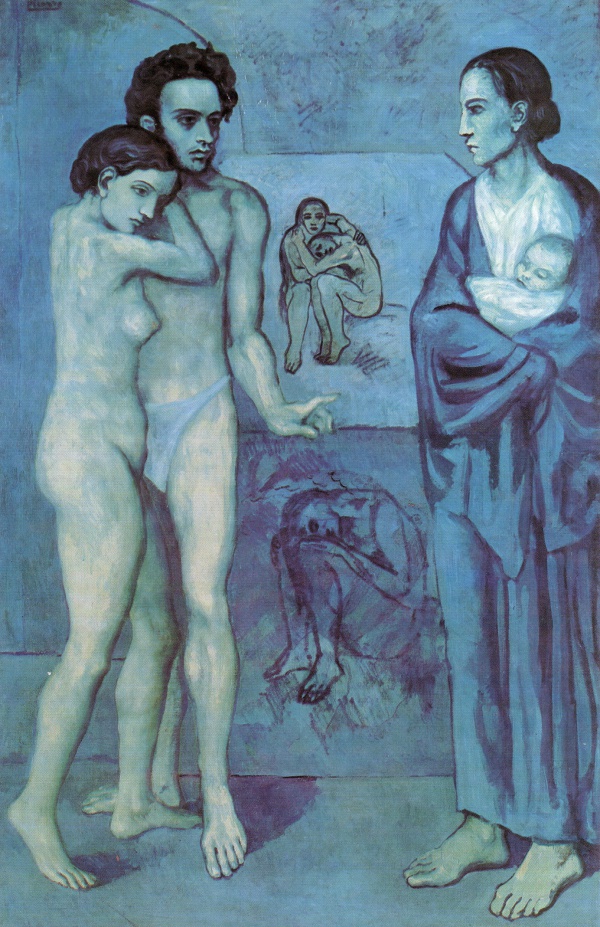Facts About La Vie
"La Vie" is a significant oil painting by Pablo Picasso, created in 1903 and often regarded as the pinnacle of his Blue Period. This masterwork is housed in the permanent collection of the Cleveland Museum of Art. Painted in Barcelona, the artwork depicts two pairs of individuals: a nude couple and a mother with a child. The composition is complex, featuring paintings within the painting, each rich with symbolism.
Picasso completed "La Vie" during a particularly challenging financial period. The painting was sold to a French art dealer shortly after its completion. The piece holds deep personal significance for Picasso, as it includes a portrait of his friend Carlos Casagemas, who had recently committed suicide. This tragic event profoundly affected Picasso, and the painting reflects his grief and introspection.
Over the years, "La Vie" has sparked considerable debate among scholars, who have explored its dense symbolism and the artist's introspective themes. In 2003, experts proposed that the painting could be interpreted on both biographical and self-referential levels. They connected it to themes of mother-child relationships, the role of the artist, and the essence of art itself.
The artwork is seen as Picasso's response to his personal struggles and his mission as a modern artist. By incorporating elements from Christian art, Picasso positions himself as a creator of new art and a Messiah-like figure, aiming to comfort and redeem through his innovative vision.

 Canada
Canada